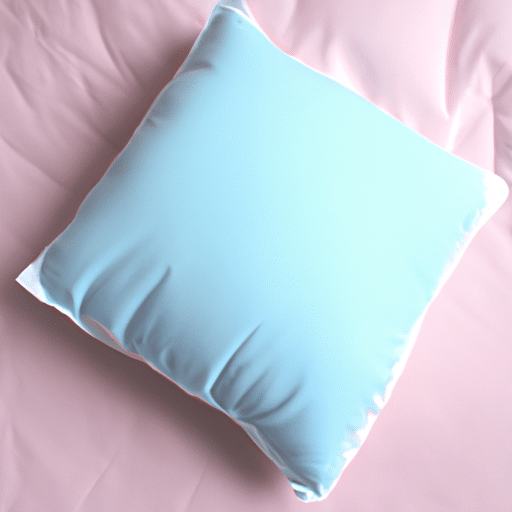Are you curious about the ideal sleeping position for a restful night? Look no further!
This article explores the various sleeping positions and their impact on our sleep quality.
From back to side to stomach, we’ve got all the details on which position suits you best. So, get ready to discover the secret to a rejuvenating sleep that leaves you feeling refreshed and revitalized each morning.
Review contents
Overview of Sleeping Positions
Importance of a Good Sleeping Position
When it comes to getting a good night’s sleep, the position in which you sleep plays a crucial role. A proper sleeping position promotes comfort and contributes to overall health and well-being. It can alleviate or prevent sleep-related issues such as snoring, sleep apnea, acid reflux, and back pain. Therefore, understanding the different sleeping positions and their benefits and drawbacks is essential for optimizing the quality of your sleep.
Different Sleeping Positions
There are three primary sleeping positions: on your back, on your side, and on your stomach. Each of these positions has its own set of benefits and potential drawbacks. Understanding these positions will help determine which suits you best and promotes restful sleep.
Sleeping on Your Back
Benefits of Sleeping on Your Back
Sleeping on your back, also known as the supine position, is considered one of the best. It promotes spinal alignment, reduces the risk of developing wrinkles or acne, and neutralizes the spine, neck, and head. Sleeping on your back can help prevent acid reflux and minimize snoring and sleep apnea symptoms.
Potential Drawbacks
While sleeping on your back has numerous benefits, it may not suit everyone. Some individuals may find maintaining this position uncomfortable and difficult at night. It can also lead to an increase in snoring for those prone to snoring. Moreover, people with conditions like sleep apnea or back and neck pain should consult a healthcare professional before adopting this sleeping position.
Tips for Sleeping on Your Back
If you want to try sleeping on your back, a few tips can help make this position more comfortable for you. Start using a pillow that provides adequate support for your neck and head, keeping them aligned with your spine. Placing a pillow under your knees can relieve pressure on your lower back. If you find it challenging to remain on your back, try sleeping with a bolster or pillow against your side to prevent accidental rolling.
Sleeping on Your Side
Benefits of Sleeping on Your Side
Sleeping on your side, whether left or right, is favored among many individuals. This position can promote healthy digestion, reduce snoring and sleep apnea symptoms, and minimize the risk of acid reflux. It is particularly beneficial for pregnant women, as sleeping on the left side improves blood circulation to both the mother and the fetus.
Potential Drawbacks
Despite its benefits, side sleeping may have some drawbacks. It can lead to shoulder and hip pain if the mattress is too firm, and it may cause wrinkles or acne on the side of the face that is in contact with the pillow. Moreover, side sleeping with inadequate pillow support can strain the neck and spine.
Tips for Sleeping on Your Side
To optimize side sleeping, it’s necessary to maintain proper spinal alignment. Use a medium-firm or firm pillow that keeps your head and neck level with your spine. Placing a pillow between your knees can also help align the spine and alleviate pressure on your hips. Choosing a comfortable mattress that provides adequate support to prevent discomfort or pain is essential.
Sleeping on Your Stomach
Benefits of Sleeping on Your Stomach
Sleeping on your stomach, also known as the prone position, may benefit specific individuals. Keeping the airways open can help reduce snoring and sleep apnea symptoms. Additionally, stomach sleeping can ease digestion for people with gastrointestinal issues such as acid reflux.
Potential Drawbacks
While stomach sleeping offers some advantages, it is generally considered the least recommended sleeping position. It can strain the neck and lead to neck and back pain, as it encourages excessive spine rotation. Moreover, it can cause discomfort and numbness due to pressure on various body parts like the breasts or genitals. Individuals with sleep apnea, back pain, or neck pain should avoid sleeping on their stomachs.
Tips for Sleeping on Your Stomach
If sleeping on your stomach is your preferred position, adopting a few strategies can help minimize the potential adverse effects. First, choose a thin or no pillow to prevent excessive neck rotation. Secondly, place a pillow under your hips to alleviate pressure on the lower back. Finally, consider switching to a different sleeping position if you experience discomfort or pain.
Combination Sleeping Positions
Benefits of Combination Sleeping Positions
Combination sleeping involves frequently changing positions throughout the night. It allows the body to relieve pressure points and promote better blood circulation. Combination sleeping can also help individuals with sleep disorders or pain conditions find more comfort and alleviate symptoms.
Tips for Combination Sleeping
If you find yourself naturally changing positions during sleep, you can embrace combination sleeping to optimize comfort and sleep quality. Start by using a versatile pillow that supports multiple positions and provides adequate support for the head and neck. Additionally, ensure that your mattress offers the right firmness and support for each sleeping position you adopt.
Sleeping Positions for Specific Conditions
Sleeping Positions for Snoring and Sleep Apnea
Adjusting their sleeping position may be helpful for individuals who snore or have sleep apnea. Sleeping on your side opens the airways and reduces snoring and sleep apnea symptoms. Elevating the head with a pillow can further alleviate symptoms by keeping the airways more upright.
Sleeping Positions for Acid Reflux
Acid reflux can be exacerbated while lying down, mainly when sleeping on your back or stomach. Sleeping on your left side can help reduce acid reflux by allowing gravity to keep the acid down in the stomach. A raised bed or wedge pillow can further alleviate symptoms by propping up the upper body.
Sleeping Positions for Pregnancy
Certain sleeping positions can alleviate discomfort during pregnancy and promote better blood circulation. Sleeping on the left side is generally recommended as it enhances blood flow to the placenta and can help prevent complications. Placing a pillow between the legs and using a pregnancy pillow for belly support can provide added comfort.
Sleeping Positions for Back Pain
Individuals with back pain may find relief by sleeping on their side with a pillow between the knees. This position helps maintain spinal alignment and reduces pressure on the lower back. Alternatively, some individuals may benefit from sleeping on their back with a pillow under the knees to alleviate lower back pain.
Pillows and Mattresses for Different Sleeping Positions
Choosing the Right Pillow
Selecting the right pillow is crucial for proper spinal alignment and support, regardless of your sleeping position. Side sleepers may need a higher loft pillow to fill the space between the head and shoulder. Back sleepers may require a medium-loft pillow that supports the neck’s natural curve. Stomach sleepers should opt for a low-loft pillow or consider sleeping without a pillow to minimize strain on the neck.
Choosing the Right Mattress
When choosing a mattress, consider firmness and support based on your sleeping position. Side sleepers generally benefit from a softer mattress for better contouring and pressure relief. Back sleepers may find a medium-firm mattress more suitable for spinal alignment. Stomach sleepers usually require a firmer mattress to prevent excessive sinking and strain on the spine.
Tips for a Better Sleep
Maintaining a Consistent Sleep Routine
Establishing a consistent sleep routine can significantly improve the quality of your sleep. Aim to go to bed and wake up simultaneously every day, including weekends. This helps regulate your body’s internal clock and promotes better sleep quality.
Creating a Comfortable Sleep Environment
A comfortable sleep environment is essential for optimal sleep. Ensure your bedroom is calm, dark, and quiet. Invest in good quality bedding and use blackout curtains or a white noise machine to block out disruptive noises and light.
Avoiding Stimulants and Electronics Before Bed
Stimulants like caffeine and nicotine can interfere with sleep, so avoiding consuming them close to bedtime is best. Additionally, minimize exposure to electronic devices such as smartphones and tablets, as the blue light they emit can disrupt your natural sleep-wake cycle.
Managing Stress and Anxiety
High stress and anxiety levels can make it challenging to fall asleep and stay asleep. Practice relaxation techniques such as deep breathing, meditation, or yoga to help calm your mind before bed. Creating a calming bedtime routine can also aid in stress reduction.
Exercising Regularly
Engaging in regular physical exercise can contribute to better sleep. However, avoiding exercising too close to bedtime is essential, as it can increase alertness and make it harder to fall asleep. Aim for at least 30 minutes of moderate-intensity exercise daily for optimal sleep benefits.
Consulting a Healthcare Professional
When to Seek Medical Advice
If you consistently struggle with sleep problems or experience chronic insomnia, it is advisable to consult a healthcare professional. This is particularly important if your sleep issues affect your overall well-being, productivity, or daily functioning. A healthcare professional can assess your situation, provide personalized recommendations, and potentially refer you for further evaluation or treatment.
Sleep Studies and Sleep Specialists
Sometimes, a healthcare professional may recommend a sleep study to assess your sleep patterns and identify any underlying sleep disorders. Sleep specialists are trained to diagnose and treat various sleep disorders, such as sleep apnea, insomnia, and narcolepsy. Working with a sleep specialist can assist in developing an individualized treatment plan to improve your sleep.
Conclusion
Choosing the correct sleeping position can significantly impact the quality of your sleep and overall well-being. While there is no one-size-fits-all approach, understanding the benefits and drawbacks of different sleeping positions allows you to make informed decisions. Experimenting with different positions, pillows, and mattresses can help you find the most comfortable and supportive sleep setup.
Additionally, incorporating healthy sleep habits and seeking medical advice can enhance sleep quality and contribute to a restful night’s sleep. Sweet dreams!



























